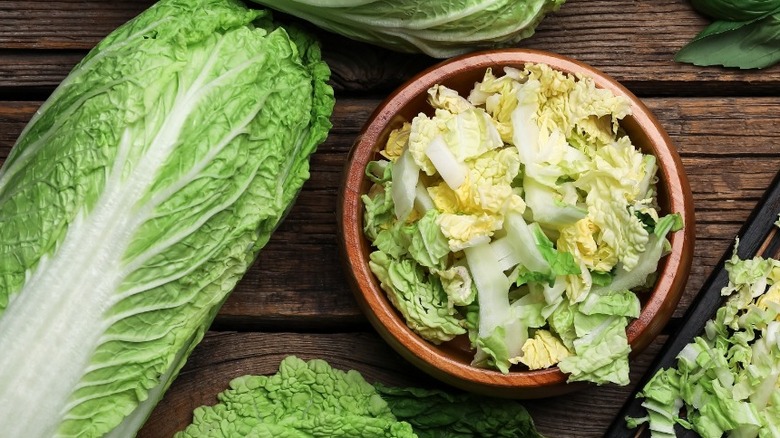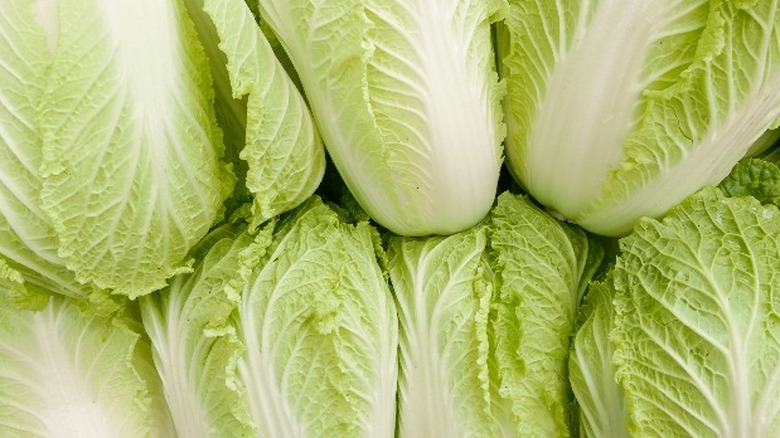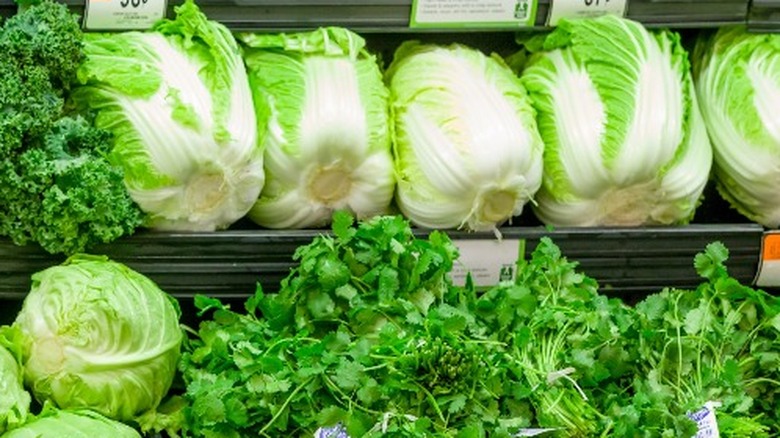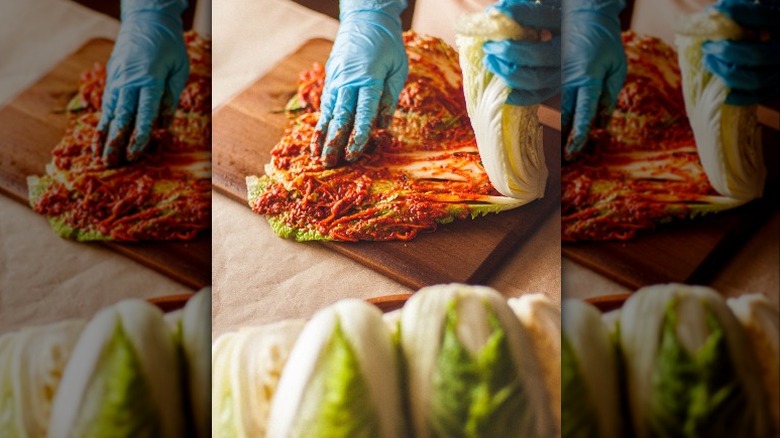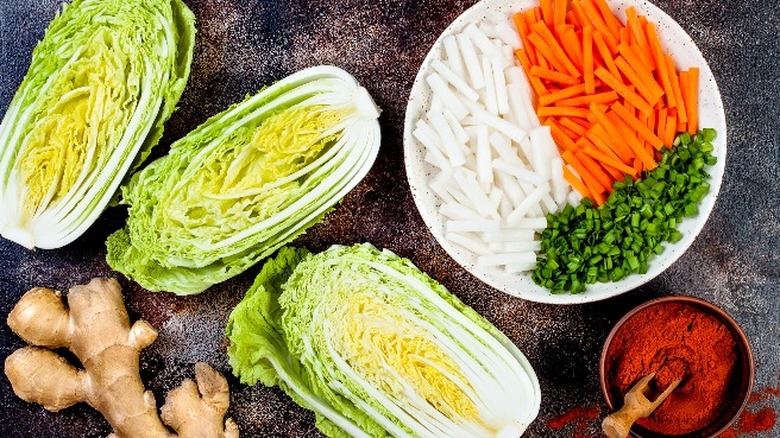What Is Napa Cabbage And How Do You Eat It?
Napa cabbage has been having a moment on social media sites like TikTok, where many chefs proclaim that if you don't like the crinkly, pale green veggie, you probably haven't eaten it prepared the right way.
Napa cabbage falls into the category of "Chinese cabbage," which is a term that can also refer to bok choy, according to The Spruce Eats. The napa variety, known scientifically as pekinensis, has leaves with thick veins and a white stalk. Some recipes refer to it as Chinese white cabbage, Peking cabbage, or celery cabbage. It's crunchy, mildly-flavored, and can be prepared in any number of ways.
The name napa cabbage originates from the Japanese word "nappa," which means leafy green, and bears no relation to the California locale. In fact, this veggie actually grows prolifically in colder areas throughout the world, particularly in the north. That's one of many reasons to make cabbage your new go-to food. It's inexpensive, versatile, nutritious, and comes in several varieties. Let's get to know napa.
What does napa cabbage taste like?
Napa cabbage has complex, contradictory textures. After being removed from the tougher stalk, the leaves have a crisp, yet tender bite to them. The thick veins are edible but have a slightly harder texture. Compared to other types of cabbage, like green or savoy, the napa variety has a much milder, smoother flavor.
The difference between napa and regular cabbage comes down to texture and flavor. Regular cabbage is slightly peppery, and you won't find that undertone when you take a bite of napa cabbage. Napa's mildness means it can complement a number of different ingredients and cooking styles without competing with their flavors. It also has heartier leaves that stay together when doused in salad dressing or combined with other ingredients. These qualities give you endless options for cooking with cabbage of this variety. However, beware that if you overcook napa cabbage, it will wilt and fall apart.
How to buy napa cabbage
Napa cabbage belongs to the brassica family, which also includes Brussels sprouts and cauliflower. When you're browsing the cabbages, which can be found at the regular grocery store or specialty Asian food stores, it's important to seek out a weighty head that has bright white ribs and crispy leaves. If the leaves look like they're past their prime, Food52 suggests skipping that particular cabbage.
To store napa cabbage, sheath it in plastic wrap and stash it in the crisper drawer of your refrigerator. Kitchen Stories explains that when you're ready to get started, employ the help of a sharp knife and a cutting board. Remove the stem, and make a v-shaped cut to help you take out the core. Then, you can separate and rinse the leaves to ward off any dirt. Another method is to submerge the entire head in cold water for about 10 minutes. Then, pluck off the leaves, stack them, and slice them all together.
Cooking with napa cabbage
Napa cabbage is most commonly associated with kimchi. This fermented Korean side dish is often eaten by itself as a side dish, but it's also used on sandwiches or mixed into other dishes. But don't be fooled — Napa cabbage is anything but a one-trick pony.
There are plenty of interesting ways to cook with cabbage, and that includes napa cabbage. The leafy vegetable is versatile in that it can be stewed or cooked in soups while still maintaining a crunch. Add it to stir-fry for a nutritious green element. Slice them into steaks and drizzle with your favorite sauce before roasting for a unique vegetarian entree. Finely chop it and incorporate the crisp ingredient in your favorite salad. Or, keep it simple by wrapping your favorite fillings in the cup-shaped leaves.
Napa cabbage, which Kitchen Stories notes is most commonly found in East Asian cuisine, has the potential to be used in many different types of cuisines. It also comes in handy when you need to prepare something in a hurry. Cabbage cooks up quickly in a hot pan; roughly 3-5 minutes will give you a "nice caramelization," which Kitchen Stories says will go well with the vegetable's already crispy nature.
Nutritional value of napa cabbage
It's not often that you find an ingredient that is as nutritious as it is versatile and approachable. At first glance, napa cabbage may not appear to be the most beneficial for your health, given its pale hue and subtle flavor. But, it's packed with vitamins, antioxidants, fiber, and folic acid (via Kitchen Stories). It's not very calorie dense, but has a decent amount of Vitamin C and Vitamin A, plus no fat or cholesterol, and almost no sodium or carbs.
People who want to lose weight or cut back on carbohydrates may prefer cabbage because they can consume a large volume of it and feel full without ingesting too many calories.
But be warned, cabbage is not a great choice for sensitive affairs, like a first date or an important meeting. Yes, there is one reason why you should think twice before eating cabbage. It's somewhat difficult for our digestive systems to handle, and too much of the leafy vegetable will lead to gas, bloating, and quite often flatulence.
